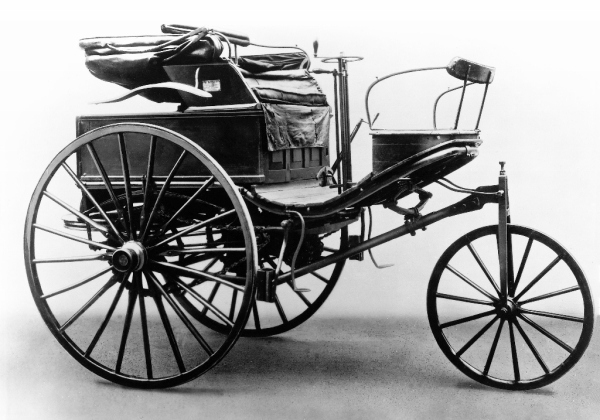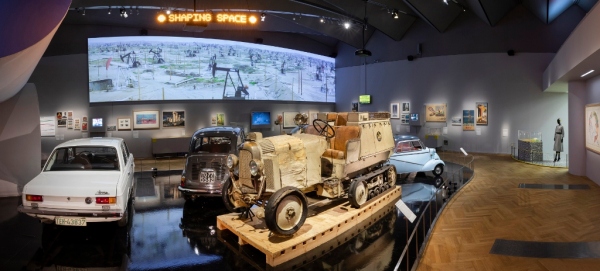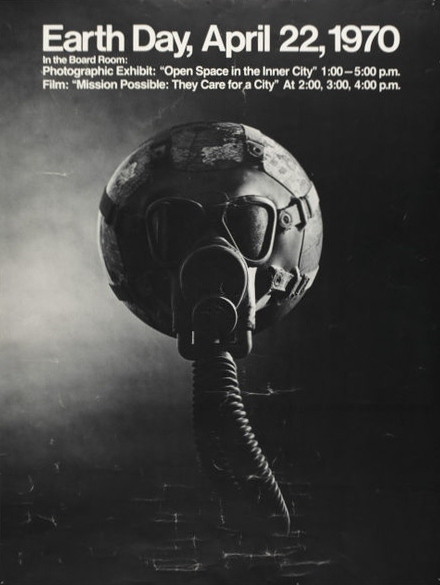GORMAN: Miss Bertha so sweet and good.
CREAM: Sweet and good, all right, but dammit if she doesn’t take me for a doddering old drivelling dotard…
The Old Tune is a free translation by Samuel Beckett of Robert Pinget’s half-hour-long 1960 radio play La Manivelle (The Crank). In Pinget’s original play two garrulous old Parisians, Toupin and Pommard, meet in the street and spend half an hour reminiscing about the old times and each other’s families. Beckett turns the Parisians into two old Dubliners he names Mr Cream and Gorman. The Old Tune was first broadcast on BBC on 23 August 1960 with Beckett stalwarts Jack MacGowran as Mr Cream and Patrick Magee as Gorman.
They’re good, aren’t they, MacGowran and Magee. MacGowran’s voice is very effectively that of a bluff old codger even though, when you actually see him, he’s quite tall and thin, and Magee’s voice has something of the weedy vulnerability which made him, in my opinion, so sensationally haunting in Beckett’s radio play, Cascando, written the year after this production. Both bring out the Irish flavour of the language and setting.
A plot of sorts
An old organ grinder, Gorman, is struggling to keep his knackered barrel organ playing on a street in Dublin. It plays a few bars, falters and he thumps it, it plays a few bars more and then lapses into silence. At that moment who should come down the street but old Mr Cream who recognises Gorman as an old friend and they start talking and reminiscing. Beckett had free choice of the tune the organ was to play since none is specified by Pinget and chose The Bluebells of Scotland, presumably suggested by the mention of a bank of bluebells near the start of the play (see my comments about the play’s title, below).
Pinget and translations
It might seem odd that Beckett, by now a name to reckon with, should have undertaken a translation of someone else’s work, but a) he had worked as a professional translator before and after the war and, of course, composed half his own works in French and then translated them back into English, so was very used to moving between versions of texts in different languages; b) he was good friends with Pinget, who had himself translated Beckett’s radio play All That Fall into French; indeed, Pinget’s play Lettre Morte was presented on a double bill with Krapp’s Last Tape at the Théâtre Récamier in Paris. So the more you look into it, the less surprising it becomes.
Anyway, it was less a favour to a friend than an opportunity. What’s striking is how utterly Beckett makes the originally French play by someone else sound as Irish as himself and the two garrulous old men sound entirely like Beckett characters, wittering on about the perils of motor cars and how it all used to be country round here and the lack of compassion of the young, tut tut, in the manner of Beckett’s countless gaga old men.
In fact the basic structure – two old codgers misremembering and bickering over trivia – is a primal element in Beckett’s works, from Mercier and Camier in the novel named after them, to Vladimir and Estragon in Godot, to Hamm and Clov in Endgame.
As to content, well it consists of a steady stream of senile old reminiscence marked by extreme attention to banal detail: Cream explains he is now a widower and had been living with one of his daughters, Daisy, but how, since her death, he has moved in with the other daughter, Bertha (Mrs Rupert Moody). Gorman tells us that his wife is still alive. Both men, we learn, are in their seventies, Gorman is seventy-three, Cream is seventy-six, and on they rattle, swapping reminiscences and half memories, about cars, about serving in the army, about an old law case, and so on.
Looking in a bit more detail you see that, as in so much Beckett, although the actual content is trite and trivial, the interest is in the treatment. Two aspects stand out, the repetition and the gaps.
Repetition
The verbal repetition of the play is both a kind of naturalistic depiction of the highly repetitive speech rhythms of the old and forgetful, but at the same time a highly stylised dissection of language and the dislocating effect created by incessant repetition, repetition which threatens to empty language of meaning.
CREAM: 1903 , 1903 , and you 1906 was it?
GORMAN: 1906 yes at Chatham.
CREAM: The Gunners?
GORMAN: The Foot, the Foot.
CREAM: But the Foot wasn’t Chatham don’t you remember, there it was the Gunners, you must have been at Caterham, Caterham, the Foot.
GORMAN: Chatham I tell you, isn’t it like yesterday, Morrison’s pub on the corner.
CREAM: Harrison’s. Harrison’s Oak Lounge, do you think I don’t know Chatham. I used to go there on holiday with
Mrs Cream, I know Chatham backwards Gorman, inside and out, Harrison’s Oak Lounge on the corner of what was the name of the street, on a rise it was, it’ll come back to me, do you think I don’t know Harrison’s Oak Lounge
there on the comer of dammit I’ll forget my own name next and the square it’ll come back to me.
GORMAN: Morrison or Harrison we were at Chatham.
CREAM: That would surprise me greatly, the Gunners were Chatham do you not remember that?
GORMAN: I was in the Foot, at Chatham, in the Foot.
CREAM: The Foot, that’s right the Foot at Chatham.
GORMAN: That’s what I’m telling you, Chatham the Foot.
CREAM: That would surprise me greatly, you must have it mucked up with the war, the mobilization.
GORMAN: The mobilization have a heart it’s as clear in my mind as yesterday the mobilization, we were shifted
straight away to Chesham, was it, no, Chester, that’s the place, Chester, there was Morrison’s pub on the corner and
a chamber-maid what was her name, joan, jean, jane, the very start of the war when we still didn’t believe it,
Chester, ah those are happy memories.
CREAM: Happy memories, happy memories, I wouldn’t go so far as that.
GORMAN : I mean the start up, the start up at Chatham, we still didn’t believe it, and that chamber-maid what was her name it’ll come back to me. [Pause.]
The repetition of themes, or of names and snatches of phrases, this repetition with variations, can be compared to the way music is composed, with the statement of certain themes which are then subjected to elaborate variations. It’s certainly not snappy dialogue designed to convey information, the opposite – it is a fog of misinformation which is more concerned with the music-style twirls and repetitions of key phrases and words.
Silent pauses and noisy traffic
There is an obvious correlation between the misfunctioning of the barrel organ which stops and starts and then sputters out a sentimental tune, and the misfunctioning of the two men’s minds, as if their brains, like the machine, require thumps and bangs to make them function.
More than that, in the handful of places where it intrudes into the narrative, the fragmented tune played by the barrel organ almost suggests that, in some eerie way, it is somehow underpinning reality itself. At several points not only the tune stops but the entire play stops with it, everything stops, and there is dead silence.
GORMAN: Do I remember, fields it was, fields, bluebells, over there , on the bank, bluebells. When you think … [Suddenly complete silence. 10 seconds. The tune resumes, falters, stops. Silence. The street noises resume.] Ah the horses, the carriages, and the barouches, ah the barouches…
It’s relatively understated, for Beckett, but I think this eerie, almost science fiction element, is suddenly apparent, in one or two haunted moments…
Different titles
One other point, Beckett clearly added entirely new content or the English equivalent of the French original content, such as naming British Army regiments and pubs in English towns (Chatham, Caterham etc). But it’s worth pausing a moment over the change in titles. Pinget named his play La Manivelle which translates as The Crank. I’m not sure whether this refers to the person or to the metal tool you’d use to hand-crank something like a barrel organ, or whether there is a deliberate play on words to refer to both. Either way, Beckett has chosen for his title something completely different, referring to neither a character nor the machine, but to the music itself. He has brought to the fore the role of music in the play.
Now the barrel-organ music doesn’t actually occur many times during the performance so it’s easy to think that Beckett, also, intends a pun, and that he is using the phrase ‘the old tune’ not only to refer to the piece of music the barrel organ plays, but to the entire style of doddery reminiscence of the two old boys.
On this reading, the title becomes a sly reference to the super-familiar Beckett idea that people just talk and talk and talk to fill the space, to give themselves the strength to go on, to fill up time, to create their own being; it is talk which means nothing and gets nowhere and changes nothing, which defines the self but is as impoverished and empty as that self.
The words ‘the old tune’ sound innocent enough, indeed they have an unusually sentimental ring for a Beckett title. But at the same time they allude to the world of bleakness, emptiness and struggle to go on, which is Beckett’s core concern.
Pauses and traffic
Back to the idea of the two eerie silences in the play and the numerous pauses the text contains. Having noted them, it’s worth going on to say that there are, in fact, not nearly so many pauses in The Old Tune as in Beckett’s other radio plays of the period. Or maybe it’s more accurate to say that the pauses aren’t so pointed and stylised. Although the stage direction ‘[pause]’ occurs regularly, it is placed to as to reflect realistic pauses in the ebb and flow of two old geezers’ garrulousness, rather than to interrupt the action altogether, in the self-consciously disruptive way which we find in his other plays of the time.
In fact the flow of words is interrupted more by a positive, intrusive element than by the negative element of silences and pauses, and this is the incessant roar of passing cars. This is something the audience can very plainly hear and which the pair of codgers directly comment on in a passage devoted to noisy traffic and the precise brand of car they’ve seen whizz by, before the drop the subject and move onto others. But every few minute before and after this passage, another car roars by, interrupting their maunderings (‘bloody cars!’).
So many times that it makes you reflect that the two old men are almost literally (and, as we’ve observed, rather eerily) tied to the outdated and clapped-out Victorian technology of the barrel organ, stuttering stopping and starting as it does, while the modern world – in the form of the steady stream of shiny, noisy motor cars – is literally passing them by (‘bloody cars!’).
Irishry
The commentary points out that Beckett drew on the stylised language of John Millington Synge, who had a similar middle-class upbringing to him, along with the verbal excesses of Seán O’Casey, who had a more working class provenance. The listener is certainly struck not only by the Irish accents but the Irish locutions used throughout:
GORMAN: Slipping along what would you want slipping along and we only after meeting for once in a blue moon.
I’m not familiar with Synge but I studied O’Casey’s play, Juno and the Paycock at school, and I remember the way the characters use a high heroic diction which contrasts with their shabby, impoverished circumstances. It’s a contradiction which is both comic and tragic at the same time, and you can think of that fundamental dichotomy – between characters who are physically and mentally impoverished using not only highfalutin language but invoking high philosophical concepts or dropping references to Dante and so on – as a really basic structural idea which underpins Beckett’s entire oeuvre, typified by the characters in The Beckett Trilogy crawling through the mud, pulling themselves through the mire, their heads full of garbled philosophy and obscure references to Dante.
The Old Tune is often overlooked by critics because it sticks out as an anomaly, a throwback, in Beckett’s steady progression towards evermore abstract and highly stylised dramaturgy, towards works which are more stage direction and choreography than dialogue and character. It’s like a last flaring-up of a more straightforward humanist view of character and an invocation of the Irish accents and speech rhythms of his youth, which he was rarely to use again.
Related link
Samuel Beckett’s works
An asterisk indicates that a work was included in the Beckett on Film project, which set out to make films of all 19 of Beckett’s stage plays using leading actors and directors. The set of 19 films was released in 2002 and most of them can be watched on YouTube.
- More Pricks Than Kicks (1934) Short stories
- Murphy (1938) Novel
The Second World War 1939 to 1945
- Watt (written 1945, pub.1953) Novel
- Mercier and Camier (1946) Novel
- First Love (1946) Short story
- The Expelled (1946) Short story
- The Calmative (1946) Short story
- The End (1946) Short story
- Molloy 1 (1951) Novel
- Molloy 2 (1951) Novel
- Malone Dies (1951) Novel
- The Unnamable (1953) Novel
*Waiting For Godot 1953 Play
- All That Fall (1957) Radio play
- *Acts Without Words I & II (1957) Mimes
- *Endgame (1958) Stage play
- *Krapp’s Last Tape (1958) Stage play
- *Rough for Theatre I & II – Stage plays
- Embers (1959) – Radio play
- The Old Tune (1960) adaptation of a radio play by French writer Robert Pinget
- *Happy Days (1961) – Stage play
- Rough for Radio I & II (1961) Radio plays
- Words and Music (1961) Radio play
- Cascando (1961) Radio play
- *Play (1963) Stage play
- Film (1963) Scenario for a film
- All Strange Away (1964) Short prose
- Imagination Dead Imagine (1965) Short prose
- How it Is (1964) Novel
- Enough (1965) Short prose
- Ping (1966) Short prose
- *Come and Go (1965) Stage play
- Eh Joe (1967) Television play
- *Breath (1969) Stage play
Awarded the Nobel Prize for Literature 1969
- Lessness (1970) Short prose
- The Lost Ones (1966-70) Short prose
- *Not I (1972) Stage play
- Fizzles (1973 to 1975) Short prose pieces
- Heard in the Dark, One evening and others – Short prose pieces
- *That Time (1975) Stage play
- *Footfalls (1976) Stage play
- Ghost Trio (1976) Television play
- …but the clouds… (1977) Television play
- Company (1980) Novella
- *A Piece of Monologue (1980) Stage play (Beckett on Film production)
- *Rockaby (1981) Stage play
- Quad I + II (1981) Television play
- Ill Seen Ill Said (1981) Short novel
- *Ohio Impromptu (1981) Stage play
- *Catastrophe (1982) Stage play
- Worstward Ho (1983) Prose
- Nacht und Träume (1983) Television play
- *What Where (1983) Stage play
- Stirrings Still (1988) Short prose
- Damned to Fame: The Life of Samuel Beckett by James Knowlson (1996) part 1
- Damned to Fame: The Life of Samuel Beckett by James Knowlson (1996) part 2
- Samuel Beckett timeline









